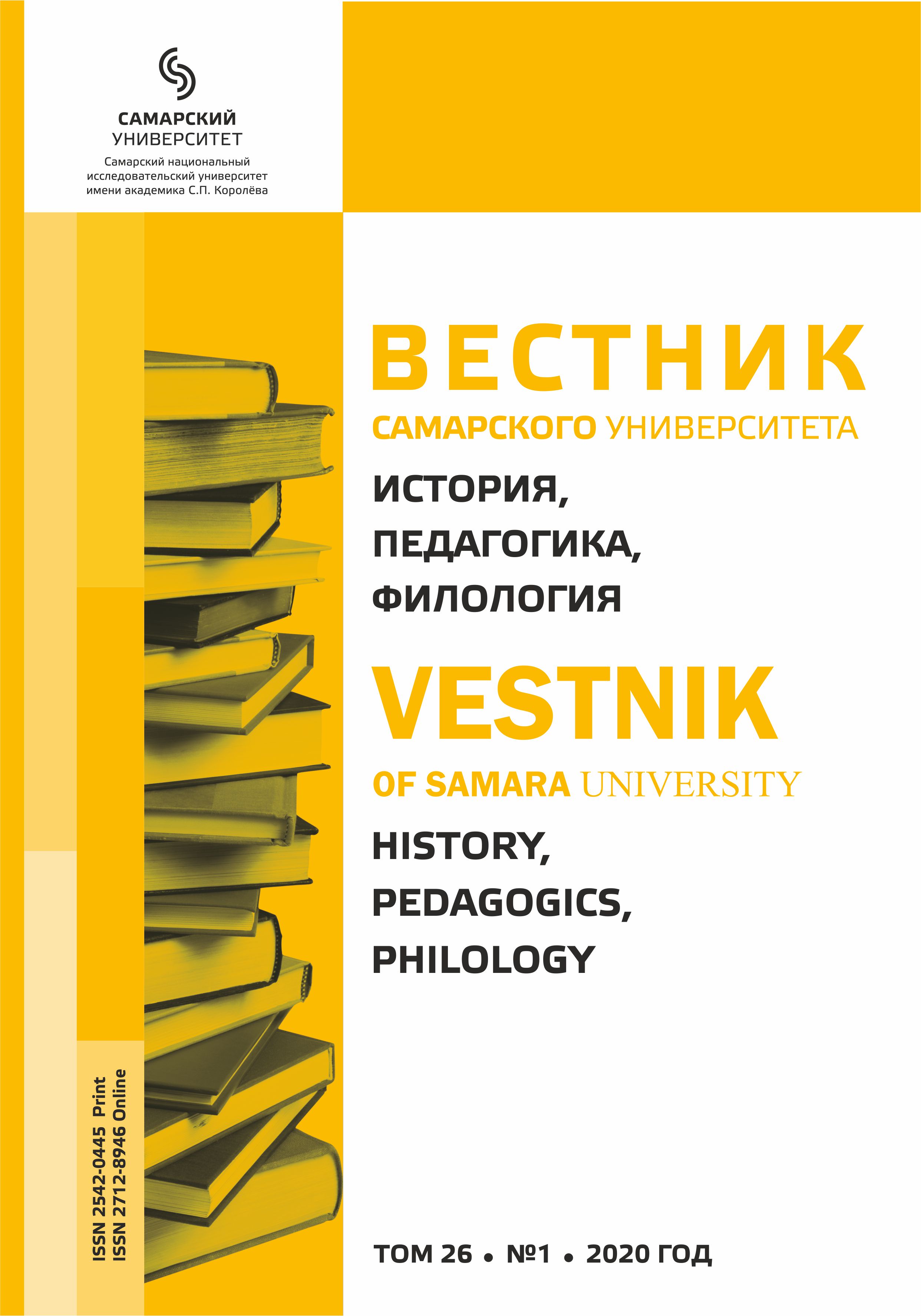Экспрессивность в речи (на материале выступлений Маргарет Тэтчер)
- Авторы: Гаджиева А.Д.1
-
Учреждения:
- Московский государственный университет имени М.В. Ломоносова
- Выпуск: Том 26, № 1 (2020)
- Страницы: 141-147
- Раздел: Статьи
- URL: https://journals.ssau.ru/hpp/article/view/7741
- DOI: https://doi.org/10.18287/2542-0445-2020-26-1-141-147
- ID: 7741
Цитировать
Полный текст
Аннотация
В современной лингвистике и стилистике отсутствует однозначность трактовки понятия «экспрессивность» и все его дефиниции пересекаются с понятиями «эмоциональность», «образность», «интенсивность», «выразительность» и т. д. В настоящее время изучению проблемы экспрессивности как в отечественном, так и в зарубежном языкознании уделяется пристальное внимание, однако, несмотря на богатый теоретический материал, нет четких понятий и терминов. Много противоречий обнаруживается
в самом определении экспрессивности: ряд ученых связывает экспрессивность и с функциональной стороной языка, и с семантикой слов, другие описывают ее в терминах лингвостилистики и лексикологии. В связи
с указанными проблемными вопросами цель статьи состояла в разработке комплексного подхода к трактовке понятий «экспрессивность», «средства экспрессивности», а также разграничении первого из понятий с термином «эмоциональность».
В данной статье, основываясь на анализе литературных источников, автором были решены следующие задачи: рассмотрены подходы к трактовке понятия «экспрессивность», после чего в ходе контекстного и стилистического анализа были определены основные средства выражения экспрессивности на материале четырех выступлений известного британского политика Маргарет Тэтчер, что позволило выявить лексические и синтаксические средства создания экспрессивности в ее высказываниях. Основным методом исследования являлся описательный анализ, а также метод компонентного анализа, предусматривающий исследование коннотативных значений речевых единиц, используемых Маргарет Тэтчер в публичных выступлениях.
В рамках данной статьи были проанализированы самые запоминающиеся выступления политика, чтобы понять, каким образом ей удавалось манипулировать аудиторией. Выявлены лексические и синтаксические особенности языкового имиджа Маргарет Тэтчер как одного из наиболее известных политиков и, что не менее важно, ораторов. В частности, выделены анафоры, эпифоры, риторические конструкции, парентезы, эмоционально окрашенная лексика, метафоры, сравнительные обороты и элементы цитирования, которые позволили политику привлечь внимание аудитории, повысить свой авторитет, дискредитировать оппонентов и т. п.
Об авторах
А. Д. Гаджиева
Московский государственный университет имени М.В. Ломоносова
Автор, ответственный за переписку.
Email: morenov@ssau.ru
ORCID iD: 0000-0002-9272-0114
аспирант, кафедра английской филологии
Список литературы
- khentoolove, Punnett 2012 – Akhentoolove C., Punnett B. Using cultural metaphors to understand management in the Caribbean // International Journal of Cross Cultural Management. 2012. Ed. 12. P. 269–275. DOI: http://doi.org/10.1177/1470595812440152.
- Hamlin, Jennings 2009 – Hamlin A., Jennings C. Expressive political behaviour: Foundations, scope and implications // Working paper. Glasgow: University of Strathclyde, 2009. P. 645–670. DOI: http://doi.org/10.1017/S0007123411000020.
- Hillman 2010 – Hillman A. Expressive Behavior in Economics and Politics // European Journal of Political Economy. 2010. Ed. 26. P. 403–418. DOI: http://doi.org/10.1016/j.ejpoleco.2010.06.004.
- Laband, Pandit, Sophocleus, Laband 2009 – Laband D.M., Pandit R., Sophocleus J.S., Laband A.M. Patriotism, pigskins, and politics: An empirical examination of expressive behavior and voting // Public Choice. 2009. Ed. 138. P. 97–108. DOI: http://doi.org/10.1007/s11127-008-9341-7.
- Балли 2001 – Балли Ш. Французская стилистика. Москва: Эдиториал УРСС, 2001. 393 с. URL: http://b-ok.cc/book/2522187/0b4337.
- Виноградов 1972 – Виноградов В.В. Русский язык. Грамматическое учение о слове. Москва: Высшая школа, 1972. 312 с. URL: http://www.slovari.ru/default.aspx?p=5306.
- Галкина-Федорук 1958 – Галкина-Федорук Е.М. Об экспрессивности и эмоциональности в языке // Сборник статей по языкознанию. Москва: Изд-во МГУ, 1958. С. 103–124.
- Кожина 1960 – Кожина М.Н. Лексика современного русского языка с точки зрения экспрессивно-стилистической // Вопросы преподавания современного русского языка в вузе. Горький, 1960. С. 81–88.
- Розенталь 1999 – Розенталь Д.Э., Теленкова М.А. Словарь трудностей русского языка. Москва: Айрис пресс, 1999. 575 с. URL: http://b-ok.cc/book/503276/576849.
- Телия 1991 – Телия В.Н. Человеческий фактор в языке: Языковые механизмы экспрессивности. Москва: Наука, 1991. 214 с. URL: http://b-ok.cc/book/3207233/96bac7.
Дополнительные файлы













